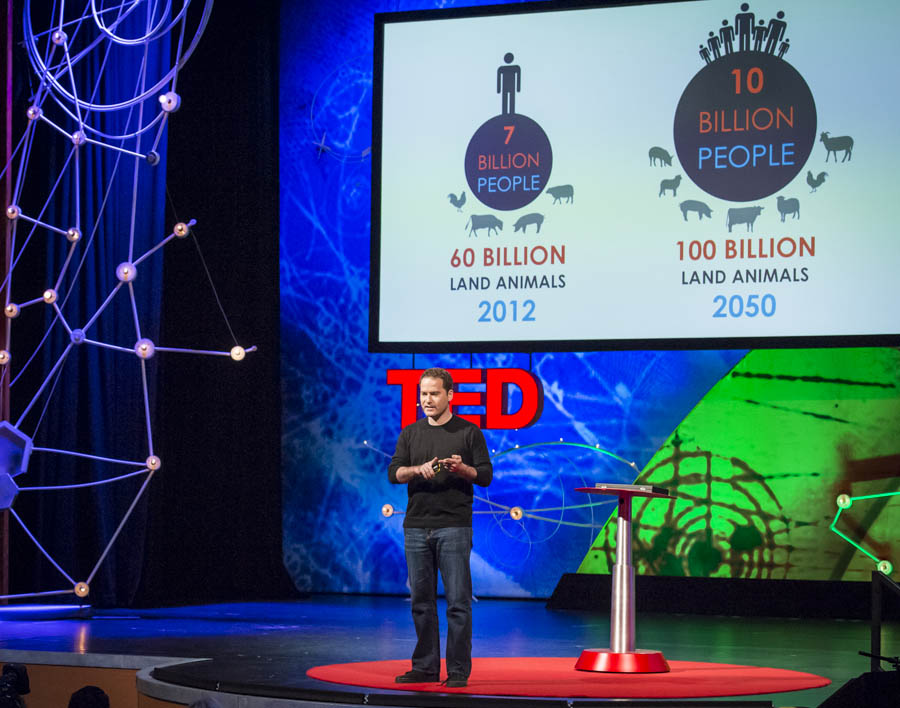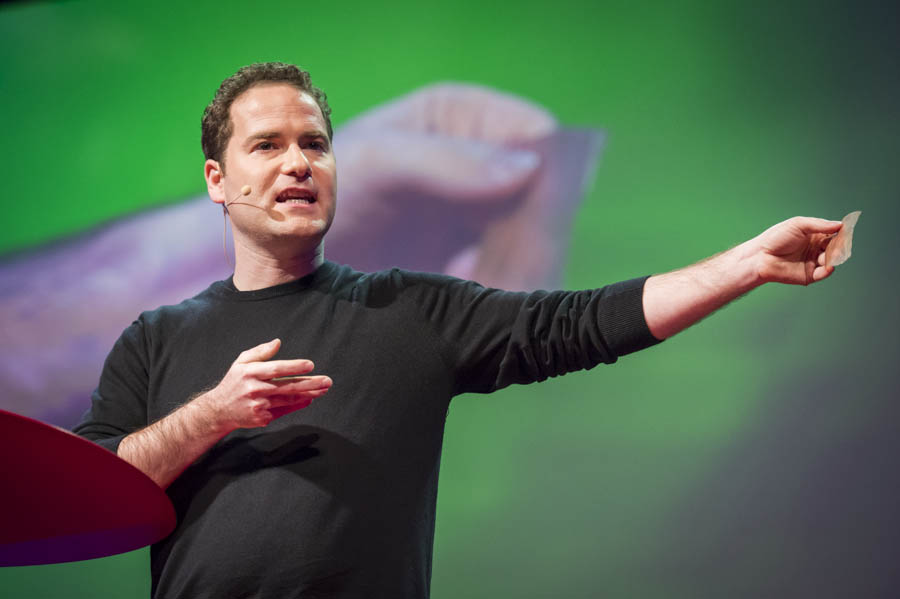Andras Forgacs is trying to grow meat. This is a concept he had to be talked into.
See, Forgacs and his father, Gabor, co-founded Organovo, which 3D-prints human tissue. And as people found out what the company did, they would often ask: If you can grow human body parts, can you also grow animal products like meat and leather? He thought they were crazy. Soon, however, he came around to it.
“This isn’t so crazy. What’s crazy is what we do today,” says Forgacs on the TEDGlobal 2013 stage. “We raise and slaughter billions of animals to make our hamburgers and our handbags.” According to Forgacs, each year we raise almost 60 billion land animals for meat and dairy goods. These animals occupy a third of Earth’s ice-free land, they drink 8% of global water, they create 18% of greenhouse gases and, because they live in such close quarters, they create a breeding ground for disease.
“Clearly, we cannot continue on this path which puts the environment and public health and food security at risk,” he says. “Animal products are just collections of tissues. So what if instead of starting with animals, we started with cells.”
Thus was born Forgacs’ latest company, Modern Meadow. For its first product, they opted to start by printing leather; they see it as a “gateway material.” It’s two-dimensional, and made from mainly one type of cell. If cultured leather works, Forgacs says, he believes people will be open to meat made in the same way.
From here, Forgas walks us through biofabrication, a process through which cells are used to grow biological products. First, cells are gathered through a simple biopsy. From that, new cells are grown, coaxed to produce collagen, spread out to form sheets, layered together like phyllo pastry, and finally tanned.
Forgacs has brought a batch of cultured leather to show and, in the camera closeup at least, it looks convincing. He points out that it even has some distinct advantages over leather — there’s no hair to remove, no scars to be contended with. This leather can be layered to be transparent or opaque, and can be altered for softness, durability, breathabilty, elasticity, even pattern. There is also no limit to shape: this leather can be directly grown in the shape of a wallet or carseat. “We can mimic nature and also improve upon it,” says Forgacs.
“We’ve already been growing food with cultures to make beer, wine, yogurt,” he points out. “Perhaps biofabrication is a natural evolution. It’s clean, efficient and humane … Perhaps we are ready for something literally and figuratively more cultured.”
Andras Forgacs’ talk is now available for viewing. Watch it on TED.com »


Comments (24)
Pingback: Lab Grown Beef Burgers??
Pingback: Brin’s $332000 Lab-Grown Burger Has Cake-Like Texture – Bloomberg | News Supply Daily
Pingback: Brin’s $332000 Lab-Grown Burger Has Cake-Like Texture – Bloomberg | NewsJournalDaily
Pingback: Brin’s $332000 Lab-Grown Burger Has Cake-Like Texture – Bloomberg | Money ChitChat
Pingback: Brin’s $332000 Lab-Grown Burger Has Cake-Like Texture – Bloomberg | DailyNewsFirst.com
Pingback: Brin’s $332000 Lab-Grown Burger Has Cake-Like Texture – Bloomberg | moneychitchat
Pingback: Brin’s $332,000 Lab-Grown Burger Has Cake-Like Texture | ccampeador
Pingback: Brin’s $332000 Lab-Grown Burger Has Cake-Like Texture – Bloomberg | For Headline News
Pingback: Brin’s $332000 Lab-Grown Burger Has Cake-Like Texture – Bloomberg | Everyday News Update
Pingback: A 3D printed future: 10 surprising things we could see printed soon | Krantenkoppen Tech
Pingback: A 3D printed future: 10 surprising things we could see printed soon
Pingback: A 3D printed future: 10 surprising things we could see printed soon | Best Science News
Pingback: A 3D printed future: 10 surprising things we could see printed soon | BizBox B2B Social Site
Pingback: How to print meat and leather: Andras Forgacs at TEDGlobal 2013 | Clothes
Pingback: Miss Moss : Lotuff Leather | Clothes
Pingback: Hip Ladies’ Leather Folding Keychain | Accessories
Pingback: Luxurious Sepia Laguna leather now adorns SRT® interiors. | Clothes
Pingback: MN Rural Round-Up: July 2013 | Minnesota Rural Partners
Pingback: How to print meat and leather: Andras Forgacs at TEDGlobal 2013 | Personal stuff